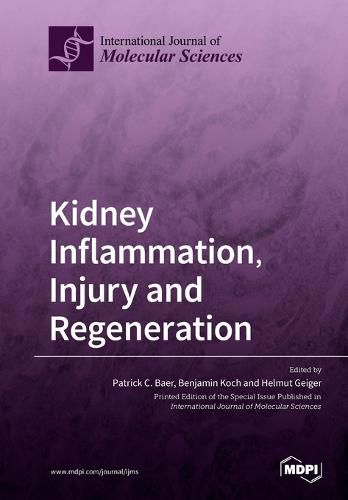Readings Newsletter
Become a Readings Member to make your shopping experience even easier.
Sign in or sign up for free!
You’re not far away from qualifying for FREE standard shipping within Australia
You’ve qualified for FREE standard shipping within Australia
The cart is loading…






This title is printed to order. This book may have been self-published. If so, we cannot guarantee the quality of the content. In the main most books will have gone through the editing process however some may not. We therefore suggest that you be aware of this before ordering this book. If in doubt check either the author or publisher’s details as we are unable to accept any returns unless they are faulty. Please contact us if you have any questions.
Acute kidney injury (AKI) is still associated with high morbidity and mortality incidence rates, and also bears an elevated risk of subsequent chronic kidney disease. Although the kidney has a remarkable capacity for regeneration after injury and may recover completely depending on the type of renal lesions, the options for clinical intervention are restricted to fluid management and extracorporeal kidney support. The development of novel therapies to prevent AKI, to improve renal regeneration capacity after AKI, and to preserve renal function is urgently needed. The Special Issue covers research articles that investigated the molecular mechanisms of inflammation and injury during different renal pathologies, renal regeneration, diagnostics using new biomarkers, and the effects of different stimuli like medication or bacterial components on isolated renal cells or in vivo models. The Special Issue contains important reviews that consider the current knowledge of cell death and regeneration, inflammation, and the molecular mechanisms of kidney diseases. In addition, the potential of cell-based therapy approaches that use mesenchymal stromal/stem cells or their derivates is summarized. This edition is complemented by reviews that deal with the current data situation on other specific topics like diabetes and diabetic nephropathy or new therapeutic targets.
$9.00 standard shipping within Australia
FREE standard shipping within Australia for orders over $100.00
Express & International shipping calculated at checkout
This title is printed to order. This book may have been self-published. If so, we cannot guarantee the quality of the content. In the main most books will have gone through the editing process however some may not. We therefore suggest that you be aware of this before ordering this book. If in doubt check either the author or publisher’s details as we are unable to accept any returns unless they are faulty. Please contact us if you have any questions.
Acute kidney injury (AKI) is still associated with high morbidity and mortality incidence rates, and also bears an elevated risk of subsequent chronic kidney disease. Although the kidney has a remarkable capacity for regeneration after injury and may recover completely depending on the type of renal lesions, the options for clinical intervention are restricted to fluid management and extracorporeal kidney support. The development of novel therapies to prevent AKI, to improve renal regeneration capacity after AKI, and to preserve renal function is urgently needed. The Special Issue covers research articles that investigated the molecular mechanisms of inflammation and injury during different renal pathologies, renal regeneration, diagnostics using new biomarkers, and the effects of different stimuli like medication or bacterial components on isolated renal cells or in vivo models. The Special Issue contains important reviews that consider the current knowledge of cell death and regeneration, inflammation, and the molecular mechanisms of kidney diseases. In addition, the potential of cell-based therapy approaches that use mesenchymal stromal/stem cells or their derivates is summarized. This edition is complemented by reviews that deal with the current data situation on other specific topics like diabetes and diabetic nephropathy or new therapeutic targets.